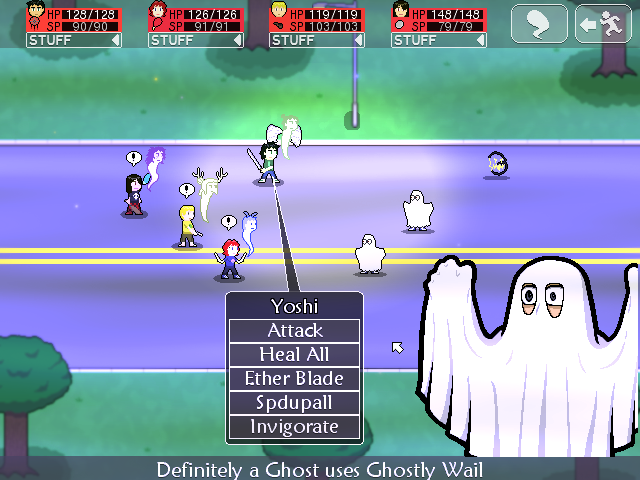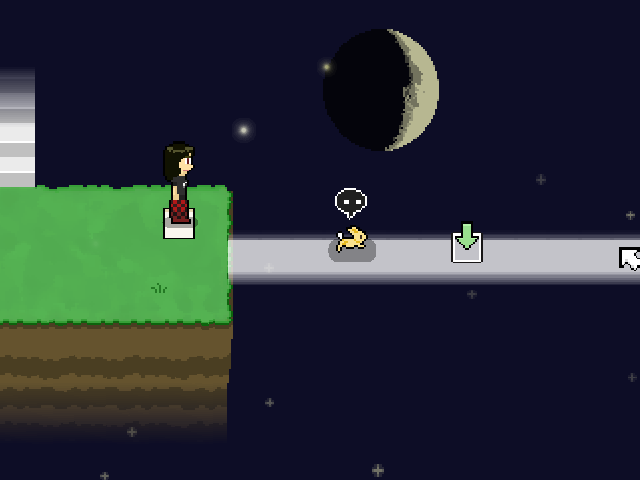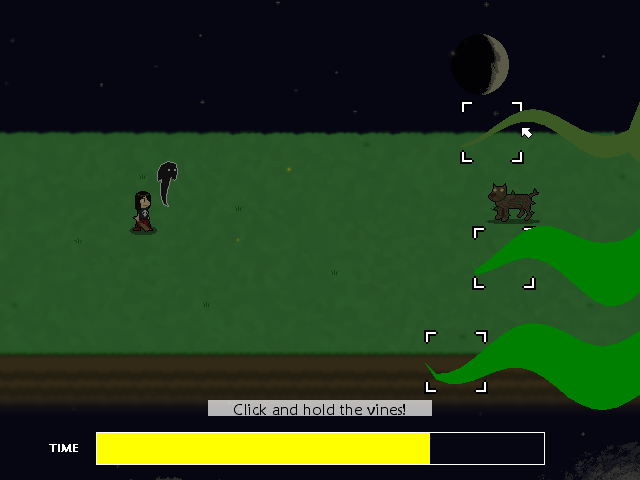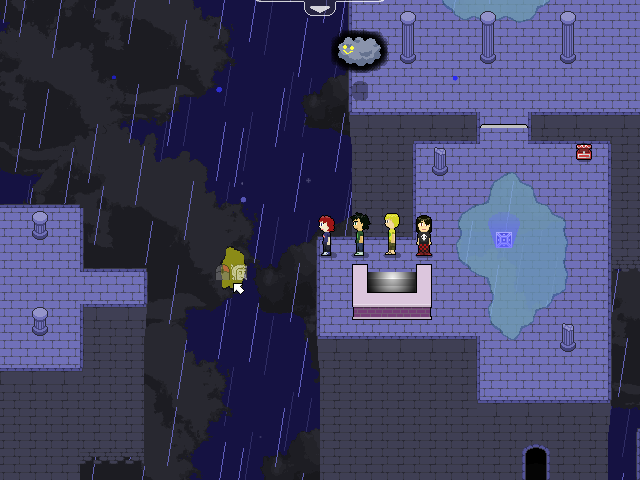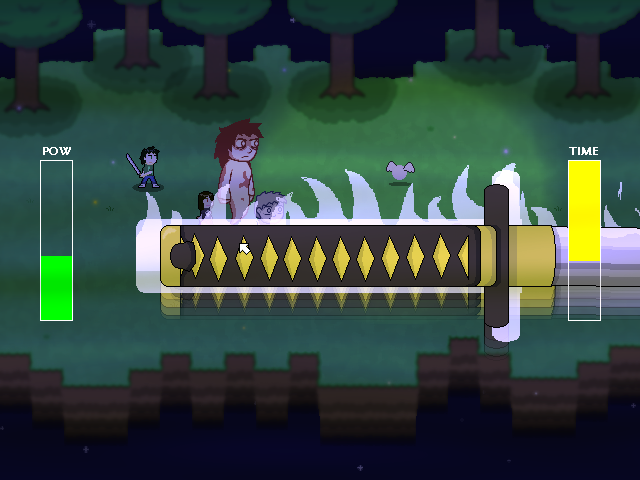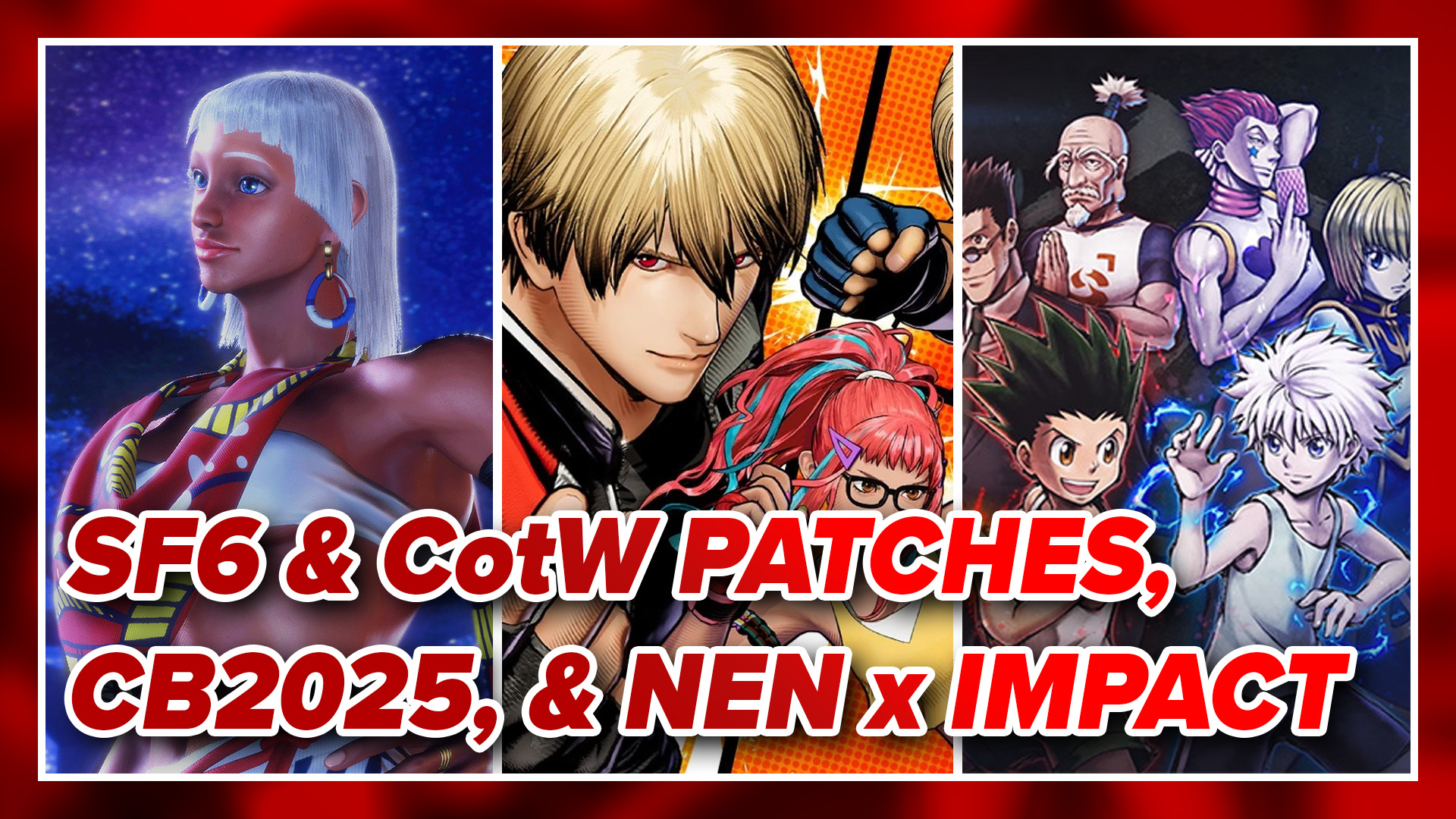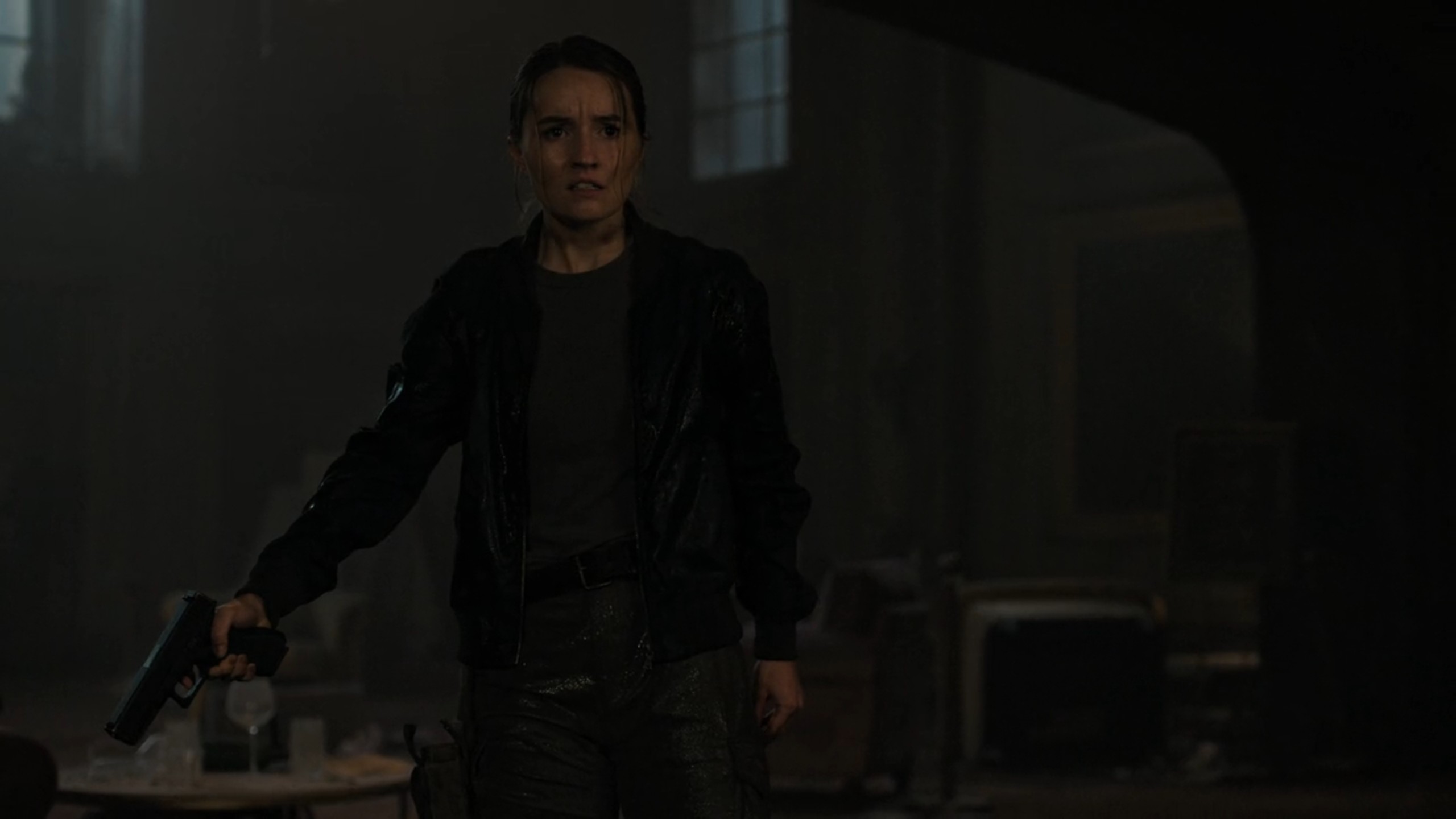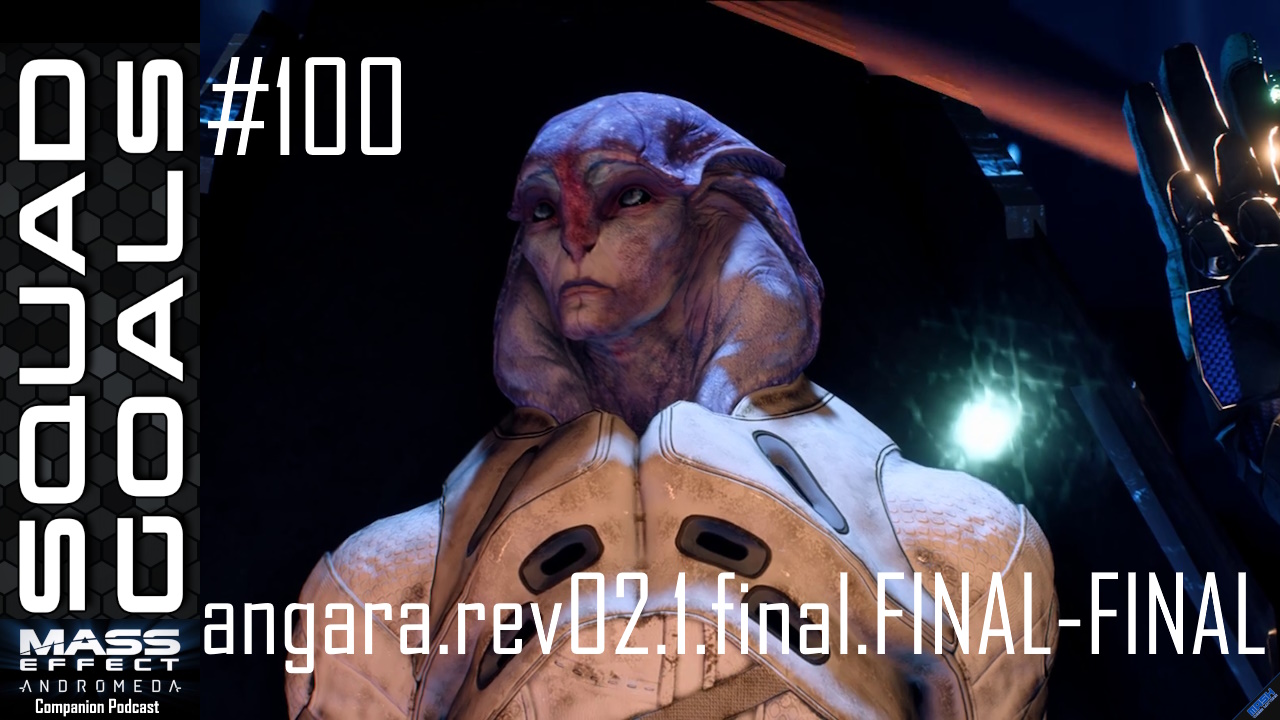RPGs used to be my games of choice. I played just about every single one I could get my hands on during the SNES, PS1, and PS2 eras, but within the last generation of games I’ve found that my interest in RPGs has fallen off the planet. I don’t have time for hours of exposition or sprawling dungeons these days, but sometimes I still wish I could enjoy the elegance of tactical, menu based combat again. Luckily, Greg Lobanov’s Phantasmaburbia has got me covered. He’s trimmed off everything I ever hated about the genre, creating a sleek, streamlined RPG with clever combat, challenging puzzles, and a goofy yet touching story.
Phantasmaburbia is the busy gamer’s RPG. I find that most RPGs will make the player jump through hoops for a few hours before coughing up a save point. Lost Odyssey was bad for that, and it got to the point where I couldn’t even play it unless I had an entire evening free or it was the weekend. I just never had the amount of time I needed to finish an area. Phantasmaburbia is extremely generous with save points, offering one every few screens so that I can quit whenever I like. I found that this was a godsend, allowing me to play the game whenever I had a few minutes free rather than having to wait until I had a few hours of spare time. I could digest a dungeon in small chunks if I had to, and I never had to worry about whether I’d have to leave the game on overnight or during work so that I wouldn’t lose my progress.
That sounds like it would make things a little too easy, doesn’t it? Save points restore you to full health, so having one every few feet is going to take away some of the danger. Players definitely won’t find the same terrified tension that they might have felt while combing through one of the deep caverns in Dragon Warrior. That could be a downside to some players, but I don’t find that losing a few hour’s progress because one enemy used an instant death spell to be all that much fun. I’d much rather play a game like Phantasmaburbia, where they’ve tried to make each fight interesting and difficult in and of itself. The difficulty isn’t through one huge slog, but in that you can reach the game over screen from only a handful of fights.
The combat is just one aspect of what makes the game a challenge, as the game really stumped me with some of its puzzles. Taking a page from the Lufia series, there are some cool puzzles placed throughout each dungeon to tease your brain. It introduces a few abilities over time, like being able to control or change places with animals, and then starts mixing them all together in interesting ways. The solutions to a lot of these rooms could be surprisingly straightforward, but in the same way that many of Braid‘s puzzles had simple solutions that weren’t readily apparent. The puzzles are challenging without being annoying, and they provide a different kind of challenge that keeps the game fresh whenever I got a little tired of fighting.
I rarely got tired of battles because the normally stiff, straightforward combat of RPGs has been given some really cool tweaks in the game. For starters, there are a lot of attacks from both the players and enemies that require a more intricate player input than just selecting an option in a menu. For instance, one of my special attacks requires me to click on a moving ball and keep on top of it as long as I could. In another fight, an enemy shot vines across the screen and I had to click and hold on the tip of each one until it dried up to avoid damage. I love it when RPGs do this, as I find it keeps me involved in the combat more than I usually would when all I’m doing is picking attacks from a menu. As an added bonus it gives the game an excuse to smack the players around much harder than they normally would, since the player is capable of avoiding the damage altogether from most special attacks through smart play. Every time I screwed one of these up, I only had myself to blame as I scrambled for my healing spells.
Another cool feature is that you have a loadout of spells you can equip instead of being able to choose from any of the spells you’ve learned. I really liked this system as it let me customize my characters based on what I thought they would be fighting. When I got closer to bosses I could equip spells that hit a single enemy harder, and in regular areas I could use my multi-target spells. This also made it possible for me to make bad choices on what magic I brought into a fight, and it forced me to be a little bit more strategic with my magic use. Also, given that combat never stops, I could see the spells I needed in an instant without fumbling through a long menu. It’s a perfect fit for the active battle system.
The battles are also pretty fast, too. There’s not a lot of flashy effects from spells to get sick of when they’re cast for the hundredth time, so the exchanges go by quickly. It might make combat seem plain, but given how many different ways I had to avoid spells or boost the strength of my own attacks using specialized inputs I always felt engaged in the fight. It’s not using graphical tricks to distract you from a boring fighting system, but opts instead to keep the battle system engaging in and of itself. I loved every battle I was in and never found that fighting was a chore.
Enjoying the battle system made grinding a snap, but the game took even further steps to take the boredom out of grinding. You really don’t have to fight that many monsters in order to level up, so if you feel that you’re a bit too weak in any given area you can fight for about five to ten minutes and you should be fine. The game also scales the experience you get down based on how strong you are, so the system can’t be abused to make you too powerful. It’s a smart move that keeps the game going.
I liked to keep the game moving because, for maybe the first time in years, I actually cared about the characters and the story that was being told. RPGs seem to have become polluted with bloated, meandering storylines, and almost every one I tried was in desperate need of an editor. Phantasmaburbia is often short and to the point, showing the characters and their motivations through snippets of dialogue between them and their spirit partners. There are no long soliloquies here, but rather exchanges between friends. That’s not to say that there aren’t some very heartfelt moments in the game, but those that are there feel more genuine because I can believe a real person might talk like these characters. They just seem very believable and relatable, and it tied the game together well.
It also strikes a perfect balance between being goofy and profound, another thing I’ve rarely seen in any form of entertainment. The characters often reflect on how silly things are, or have funny reactions to the stuff that is going on. Most of the game has a very lighthearted feel, something that perfectly frames the SNES-era graphics. It’s not something that is going to make you laugh out loud very often, but I found the game’s tone and characterization just kept a smile on my face and turned the game into pure fun.
It’s because of this tone, though, that some of the game’s darker elements hit all that much harder. The game really works hard to put you in the mindset of someone with very few cares in the world beyond what’s happened during the game, only to blindside you with some truly horrific events. I stumbled across one side quest after watching light flashing in a window of one of the background houses. What I saw inside, even with the silly graphical scheme, shook me. I was stunned at the dark events I saw in that house, and was completely blown away at how the game had just kicked my legs out from under me. I was amazed at how much it had affected me emotionally, and I literally needed a minute to process what I’d just seen.
To me, the SNES graphical style absolutely fits with the game. I’ve heard many opinions claiming the look turned them off the game, but that’s a real loss for them. The look contains a charm and simplicity to it that allows the characters to be expressive without looking too realistic. The cartoonish nature of the game helps cement its lighthearted nature while strengthening the unsettling content. It just makes the good and bad really pop in different ways that I can’t see 3D polygon graphics managing to pull off. Also, as this game draws a lot on nostalgia for RPGs like Earthbound, you just have to use that art style. Nothing reminds me of the feeling of playing an RPG on a Saturday morning than SNES graphics.
The music is to die for, too. I found myself humming the battle tune to myself while doing the dishes the other day, and could recall whole sections of the game’s soundtrack after hearing it a time or two. It’s got this resonant quality that just gets inside of my head and sticks with me, reminding me of how much I’d rather be at home playing the game. Also, this game has some of the best boss and battle music, really upping the tension during the fights in the game. There’s a menace to the boss track that conveys that you’re in trouble before you even see what the boss looks like, something few games manage on sound alone. Also, the main exploring theme feels like it was meant for a group of people going on an adventure, but has this sad tone to it that reflects the game’s darker elements. It’s just a really nice, tight soundtrack to listen to while you spend hours exploring the game.
When it’s done it’s done, right? Lobanov has mentioned a few times that he is more interested in linear RPGs that tell a good story, and while he’s done that here, he’s also thrown in a curve ball for the open world-lovers. As a final touch of brilliance, there are eight available dungeons in the game and you’ll only be able to reach four of them. Each one is focused on a single element, and as you complete it the game’s villain will complete the dungeon of the opposing element. That means you only get to see about half the game on any given playthrough, leaving you with a whole new game to play through when you boot it up for a second time. Adding in New Game + has always been a cool idea in RPGs, but one where you get an entire game worth of new dungeons is amazing. It’s hard to beat that kind of replay value.
I tried my best to think of a reason, any one at all, as to why you shouldn’t play Phantasmaburbia, but I can’t think of any. It’s a sleek RPG, streamlined and smartly edited to give you involved combat, a comedic and touching storyline, and some of the best visuals and sound since Earthbound. It’s an obvious labor of love from someone who cares about the genre, someone who wants to see it grow while still retaining its classic roots. Phantasmaburbia is the easily the best RPG I’ve played in years, a game that laughs in the face of billion-dollar games that don’t show even half the heart and inventiveness that it does.
Phantasmaburbia is a steal at any price, and is available from the developer’s site.

